This Italian lemon pound cake is moist, tangy, and perfectly balanced. This fluffy dessert has a pronounced citrus flavor thanks to the lemon zest.
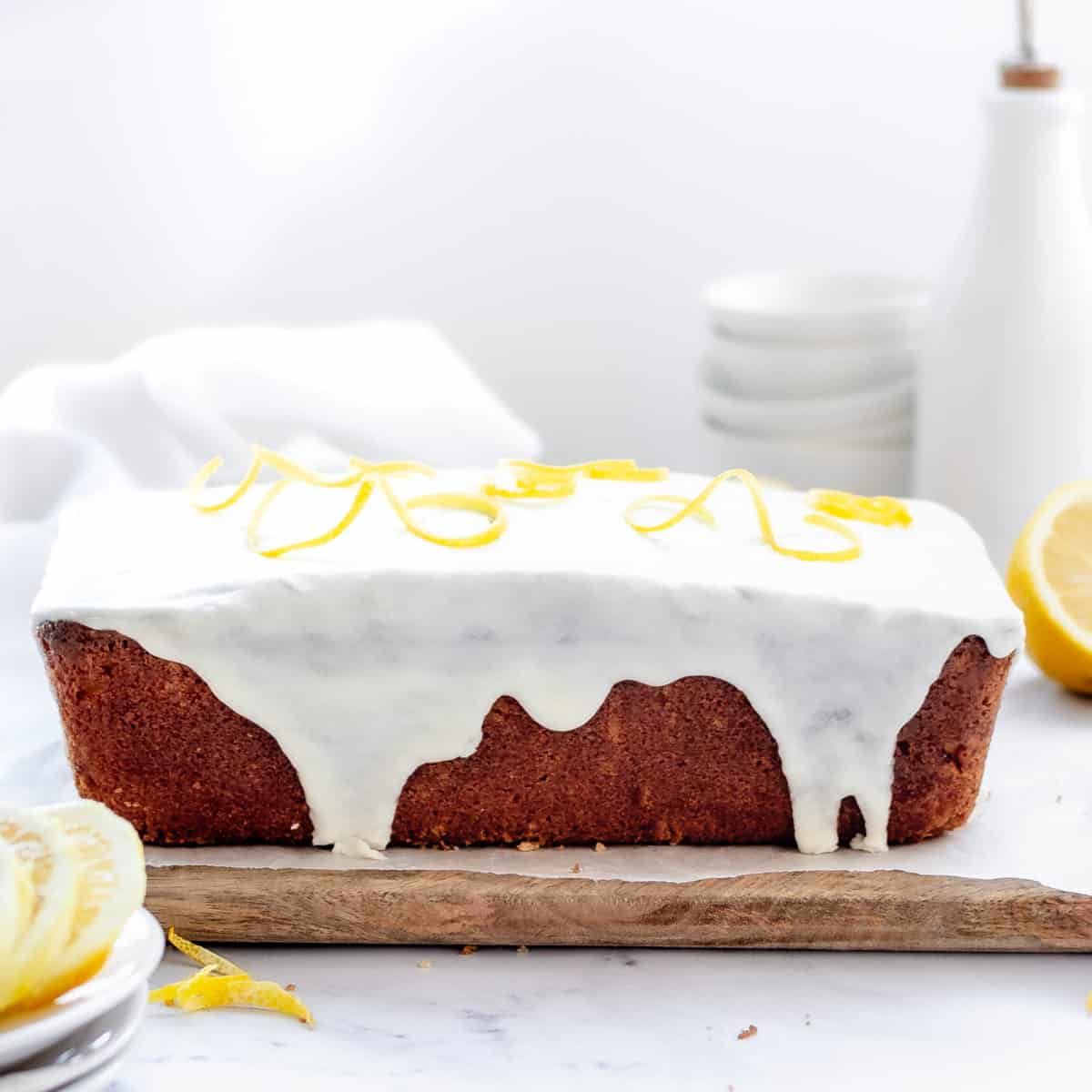
Jump to:
It soaks in a delightful lemon syrup for a tender texture and is iced with a powdered sugar glaze for balanced sweetness. This cake is the ultimate dessert to enjoy on a sunny spring or summer day.
If you love Italian desserts, then I also recommend you try this lemon biscotti or my favorite mango panna cotta. They are both so delicious!
Main Ingredients
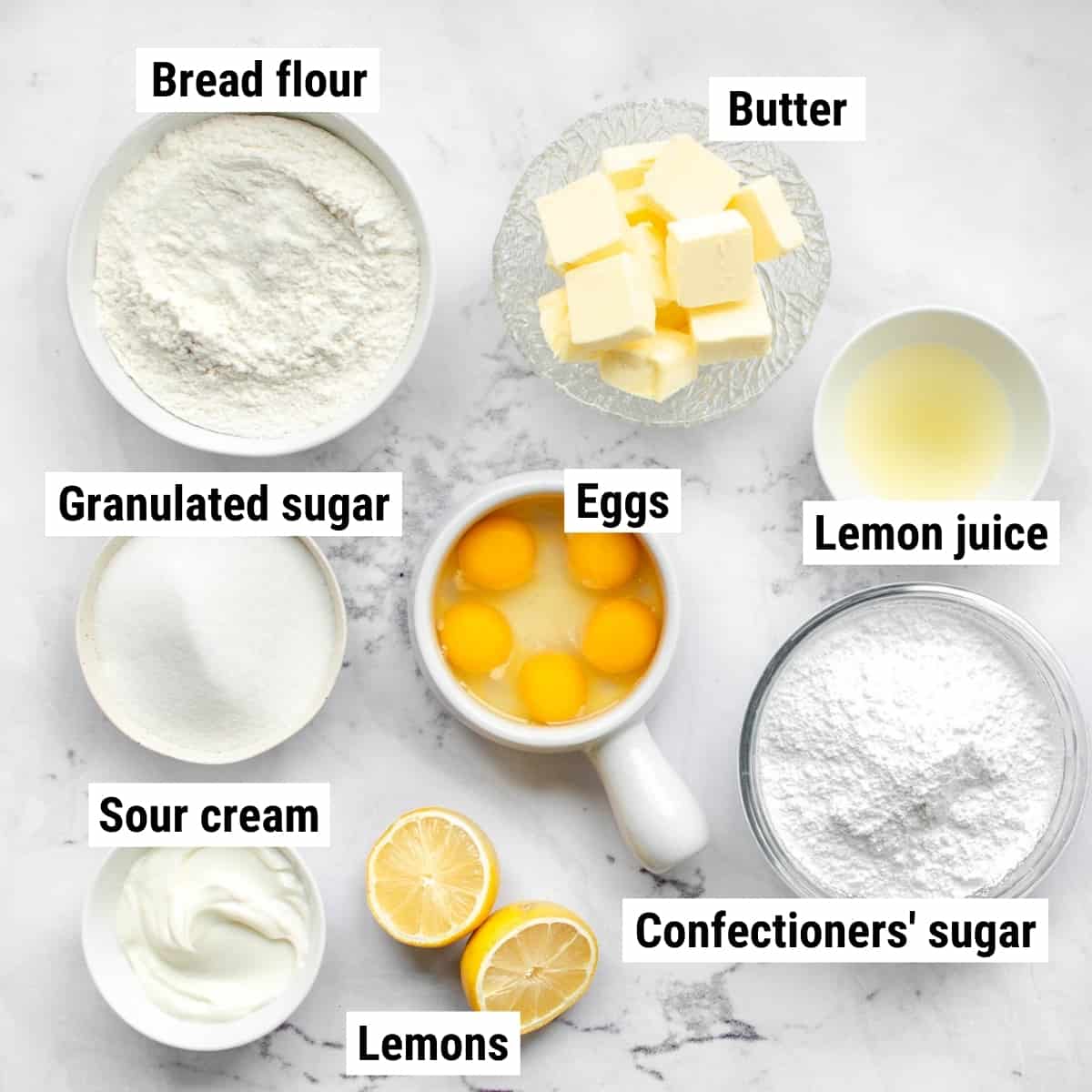
You need less than 10 ingredients to make this recipe. Some of the key ingredients are:
- Lemons: Both the lemon juice and zest are used for a maximum tangy flavor.
- Bread flour: Helps the cake hold its structure while soaking in the syrup for the optimal moist texture.
- Butter: For air and structure for fluffiness and tenderness.
- Eggs: Also for air and structure to create more fluffiness.
- Sour cream: For a moist and tender texture.
- Confectioners' sugar: For a smooth, velvety, delightfully sweet glaze.
Instructions Overview
Making this Italian lemon pound cake is both fun and simple, requiring only three components: the cake, the syrup, and the powdered sugar icing.
To make the cake, whisk together the baking soda, bread flour, and Kosher salt. In the bowl of a stand mixer, beat the butter, lemon zest, and sugar for 8 minutes on medium-high. Add in the sour cream and beat for another minute. Add the eggs and egg yolk one by one. Then add the lemon juice.
Set the mixer to its lowest setting. Add the flour mixture. Mix for about a minute until fully incorporated and your batter is velvety smooth. Your mixer does all the work for you!
Transfer the batter to a parchment-lined 9x5 loaf pan. Bake at 325°F for about 1 hour and 35 minutes. Let cool in the pan for 10 minutes. Pro tip: You can also bake it in a Bundt pan for about an hour if that's more your style.
While the cake is baking, prepare the syrup. It’s incredibly straightforward requiring only 3 ingredients! Boil lemon juice, granulated sugar, and water until it is no longer cloudy. Let it cool. That’s it!
Pour half of the syrup on top of the cake. Let it absorb the syrup for a moment. Then, pour the remaining syrup and leave it for 15 minutes.
Remove the cake from the pan by running a sharp knife along the edges and pulling on the parchment paper. Set it on a baking rack to fully cool.
The icing is another 3-ingredient wonder! Simple whisk melted butter and confectioners' sugar. Slowly add in lemon juice until you have a perfectly smooth glaze. That’s all it takes!
Pour the icing over the Italian lemon pound cake evenly, then slice and serve for a delicious treat!
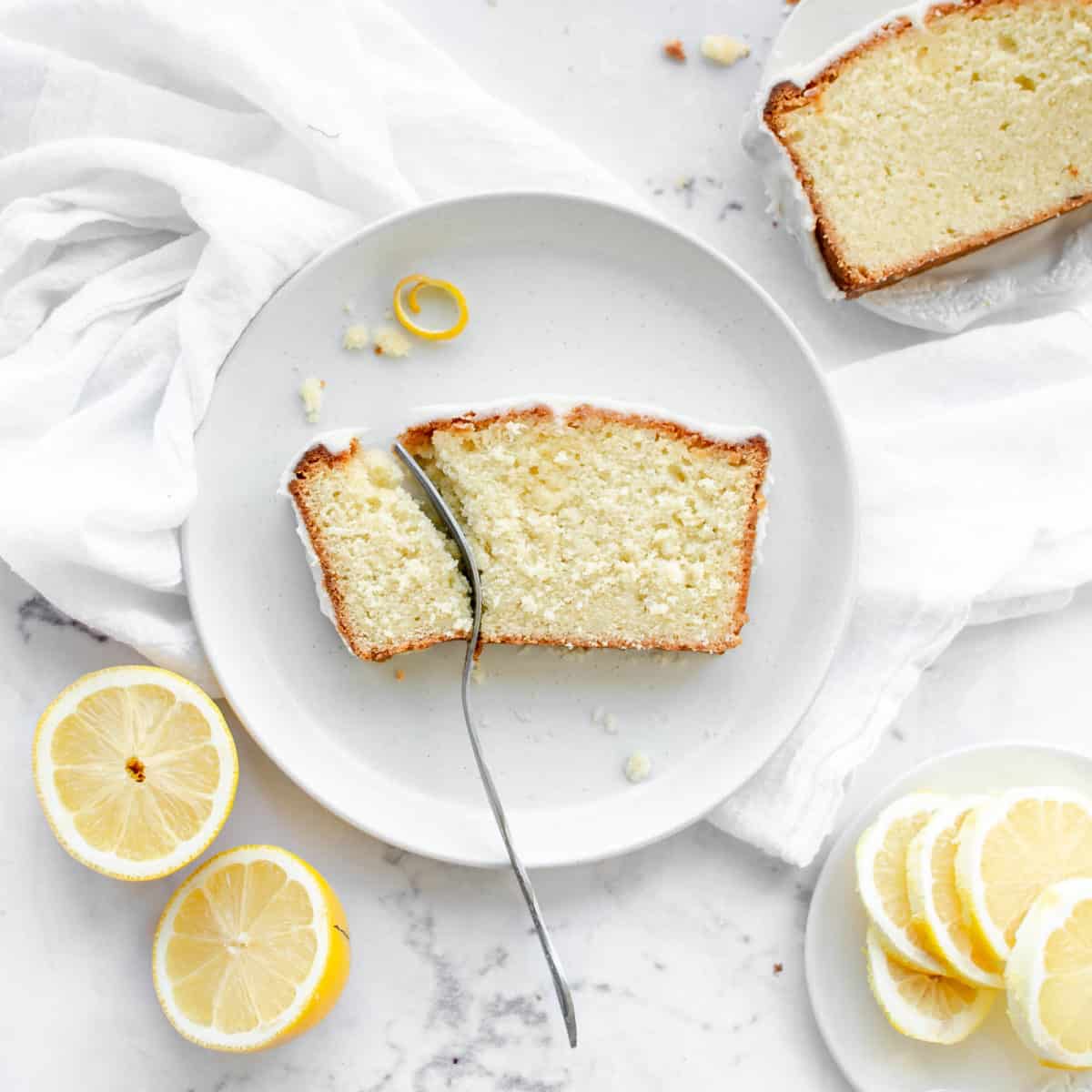
Common Questions
Bread flour has a 12 or 13% protein content, making it stronger than regular all-purpose flour. If you don't have this ingredient, you have other options. Either use all-purpose flour or bear in mind the pound cake won't have the exact same texture or replace 1½ teaspoons of all-purpose flour with 1½ teaspoons of vital wheat gluten. To be honest, it really doesn't make that much difference. I do like to use bread flour in bread recipes though because it gives such a nice 'chew'.
Pound cake offers a denser, richer texture and flavor than regular cake. Pound cakes are so named because the older recipes used to call for a pound of each ingredient to be added. You'll see this recipe doesn't, but I've made it a few times and it always comes out great!
You'll see it rising up during baking. This Italian lemon pound cake will fall a little as it cools down, but it shouldn't sink or cave in. If it does that means you didn't bake it for long enough.
Either you used too much flour or too little sugar and/or butter or you left it in the oven for too long. Another possible cause is an oven which runs hot. Some ovens get hotter than they're supposed to. If you already know yours does, then lower the heat a bit to make up for it. Follow this recipe closely, and your Italian lemon pound cake will come out wonderfully!
To keep it fresh, store it in an airtight container at room temperature. Enjoy within 3 days. The syrup helps keep the cake moist, so you could also refrigerate your cake to keep it fresh for longer. Wrap it in plastic and foil and then place it in the refrigerator and enjoy it within 1 week.
Yes, you can freeze it. It would be best if frozen uniced. Wrap it in plastic wrap and foil. Freeze for up to 6 months. Thaw your lemon cake on the counter when you’re ready to enjoy it.
This recipe keeps for several days, so you could prepare the entire dessert in advance. However, it is not recommended that you prepare the batter in advance as it will lose its airy, light texture that your stand mixer worked so hard to achieve!
Serve it alongside some fresh strawberries, raspberries, or blueberries for a delightfully refreshing dessert.
Poke a skewer in the center of your loaf or Bundt pan. Pull it out. If it comes out clean, the cake is done. If some of the batter sticks to the skewer, continue baking.
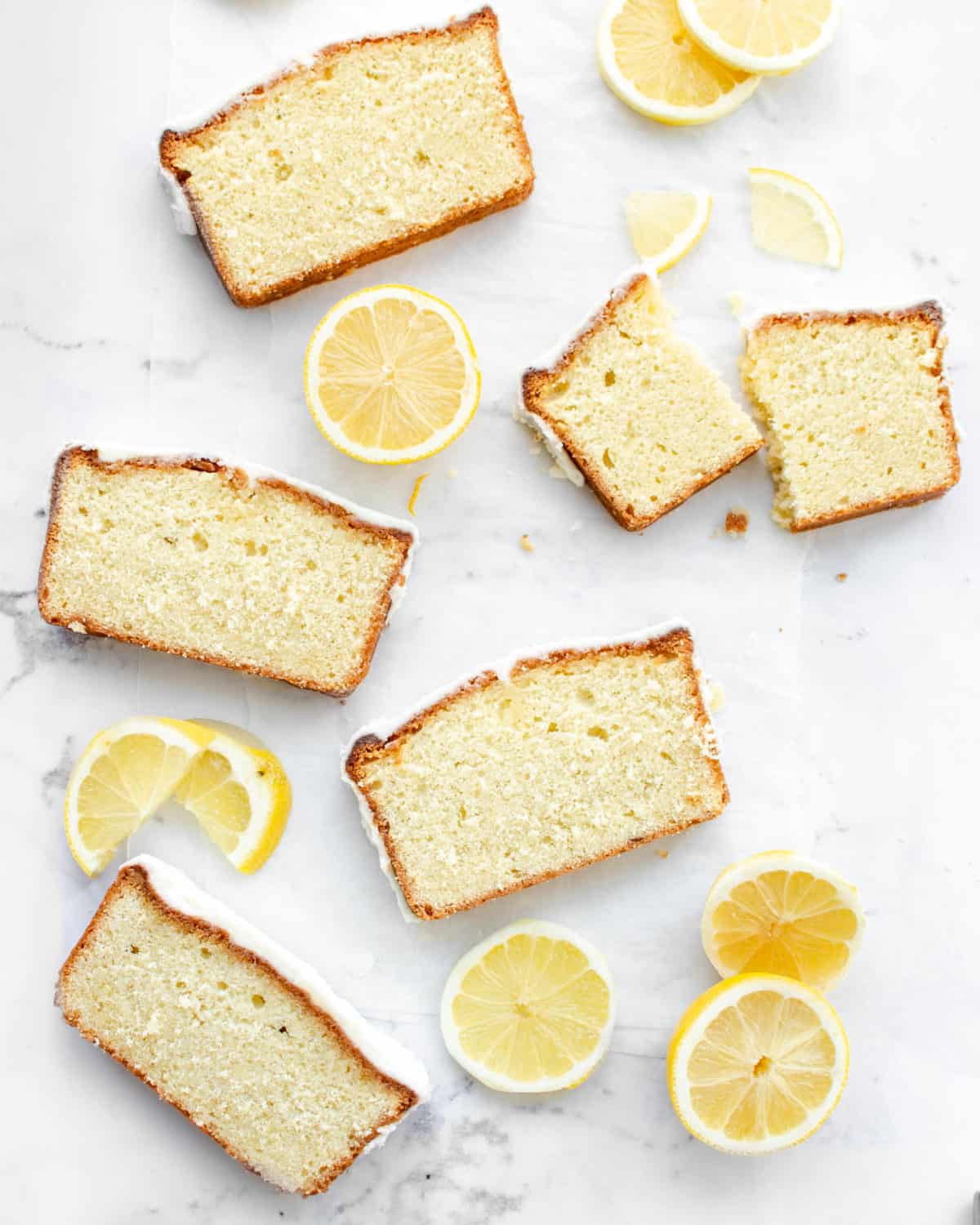
Chopnotch Tips
- Ensure all your ingredients are at room temperature so you can achieve a perfect airy texture.
- When mixing batter, scrape down the sides of the bowl every couple of minutes or after adding new ingredients, to ensure everything is fully incorporated.
- To test the doneness, poke a skewer in and remove it. If it comes out clean, it's ready.
- If you do not have a loaf pan, use a Bundt pan instead!

This Italian lemon pound cake is a lemon lover’s dream!
Related Recipes
Let us know what you think! Give this recipe a rating in the comments section below.
Recipe
How to Make
Italian Lemon Pound Cake
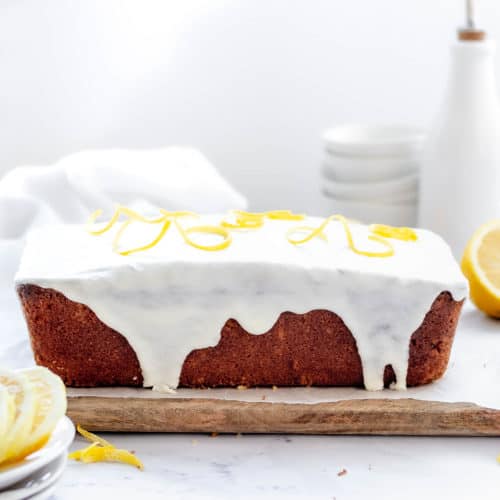
Ingredients
For the cake:
- 1 cup unsalted butter, at room temperature
- ¼ cup lemon juice
- 2 ½ cups bread flour
- 1 egg yolk
- ¼ teaspoon baking soda
- 4 large eggs
- ⅛ teaspoon kosher salt
- ⅓ cup sour cream
- 1 ¾ cups granulated sugar
- Zest from 3 lemons
For the lemon syrup:
- ¼ cup lemon juice
- ½ cup granulated sugar
- 2 tablespoons water
For the icing:
- 1 ¼ cups confectioners’ sugar
- 1 tablespoon unsalted butter
- 2 tablespoons lemon juice
Instructions
- Butter the bottom of a loaf pan (9x5) and cover with parchment paper, leaving enough parchment hanging over all sides.
- Whisk together all the dry ingredients in a bowl including ¼ teaspoon baking soda, 2 ½ cups bread flour, and ⅛ teaspoon kosher salt. Keep aside.
- Beat together 1 cup butter, zest from 3 lemons, and 1 ¾ cup granulated sugar in a small bowl of a stand mixer fitted with a paddle attachment for 8 minutes on medium-high, scraping down the sides in between.
- Add in ⅓ cup sour cream and continue beating for another minute.
- Start adding eggs and egg yolk, one by one, scraping down the bowl after each addition.
- Add in ¼ cup lemon juice and continue beating for a minute, scraping down the sides and bottom before adding flour.
- Set your stand mixture on the lowest setting and add in the flour mix. Stir until flour is incorporated, for a minute. Scrape the bottom and sides of the bowl by using a spatula and finish folding the ingredients together. The batter will be velvety and thick.
- Transfer batter to a loaf pan and smooth top by using a spatula.
- Bake at 325 F until skewer inserted comes out clean from the center, for about 1 hour and 35 minutes.
- Meanwhile, prepare the lemon soaking syrup. Boil all the sauce ingredients in a saucepan until no longer cloudy. Once done, let it cool.
- Once the cake is baked, take it out from the oven and let it cool for another 10 minutes.
- Pour over half of the lemon syrup and allow to soak in. Then pour in the remaining syrup and leave for 15 minutes.
- Now run a sharp knife along the edges and lift the cake out by using the parchment sling and set on a baking rack.
- While it cools, make the icing. Melt butter in a medium microwave-safe bowl for 10 to 20 seconds. Add the confectioners' sugar and whisk well while adding lemon juice.
- Pour icing over the cake evenly and spread it. Slice and serve!
Notes
- Ensure all your ingredients are at room temperature so you can achieve a perfect airy texture.
- When mixing the batter, scrape down the sides of the bowl every couple of minutes or after adding new ingredients, to ensure everything is fully incorporated.
- To test the doneness, poke a skewer in and remove it. If it comes out clean, it's ready.
- If you do not have a loaf pan, use a Bundt pan instead!
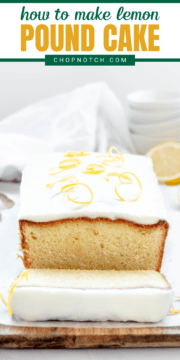









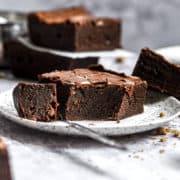


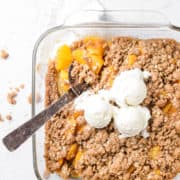




Could you substitute almond flour or regular flour instead of bread flour? Would that change to texture of the cake? I'm going to try it when I find out about the almond flour.
Hi Lizette, thanks for your question. Yes, you can use all-purpose flour or almond flour as a 1:1 substitute. Please note, it won't rise quite as much and therefore it will be a little denser, but I'm sure it would still be delicious! I don't have a ton of experience with almond flour, but if you decide to go that route, add an extra egg or two to help it bind and you should be fine. Hope this helps!